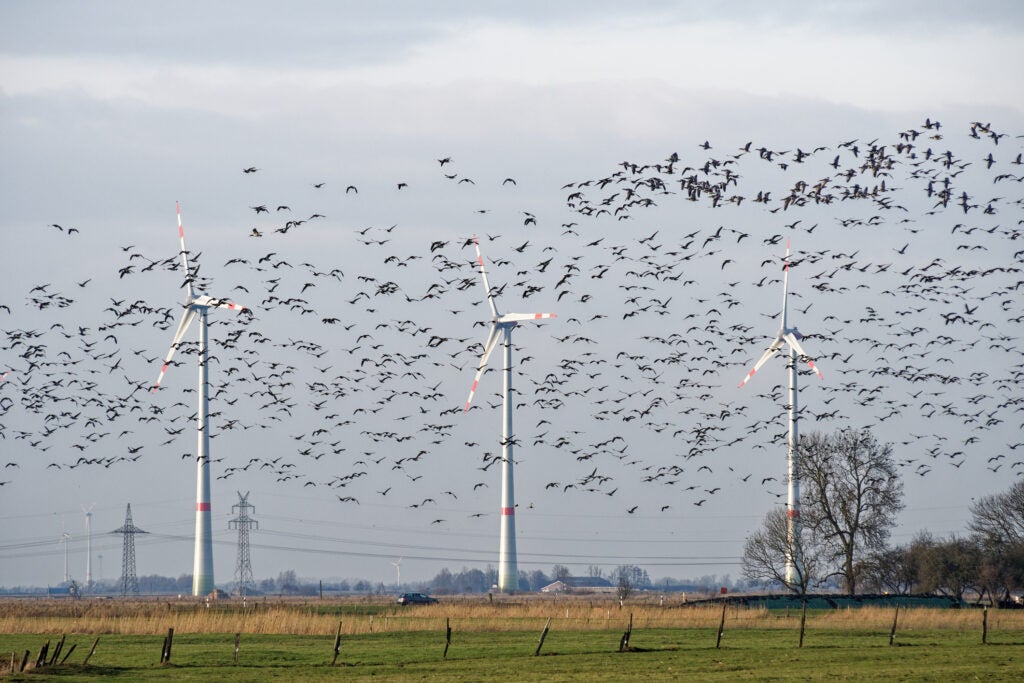Separating Fact from Fiction on Wind Turbine Bird Deaths
Ever since the first commercial wind turbines came online in the 1980s, there have been people preoccupied by their negative impacts on the environment. Whether it be criticisms of turbines as blights on the landscape, scepticism at the complicated mineral requirements of the technology, or anger at noise produced by the blades as they turn, the anti-wind lobby has been fierce.
One criticism of wind power that continues to draw significant attention is the number of birds killed by spinning blades. Former US President Donald Trump, for example, accused the technology of “killing all the birds”, while current president Joe Biden has been accused of a “great bird slaughter” by the US anti-renewables lobby – but just how dangerous is wind power for birds?

With wind farms rapidly scaling up across the world, it is hard to find a measure of the number of birds being killed each year that will still be accurate, but Joel Merriman, a wind specialist at charity the American Bird Conservancy, modelled the death rate at the start of 2021. He accounted for the fact that many of the bird death studies were published earlier in the decade and the numbers will have increased since then. He also factored in that many deaths of smaller birds will escape the notice of studies. Merriman concludes that 1.17 million birds are killed by wind turbines in the US each year.
This is a lot of birds, but it is only 0.016% of the estimated 7.2 billion birds that live in the US. It is also significantly less than the 5–6.8 million killed each year by communication towers, the 60–80 million killed by automobiles, the 67–90 million killed by pesticides, or the 365 million to one billion killed by cats each year in the US, according to a study published in Nature.
Even if we adapt Merriman’s model to reflect the predicted increase in wind power across the US, as modelled by the US Energy Information Administration (EIA) in its outlook for 2021, turbine deaths come nowhere close to these figures. The 90% increase in wind power from 2021–50 envisaged by the EIA would see 2.22 million birds killed annually by mid-century.
Of course, simply looking at the total number of birds killed fails to acknowledge that particular species may be disproportionately affected. Studies have shown it is often larger birds of prey, of which there are fewer in an ecosystem, that are more likely to fly into blades. The Royal Society for the Protection of Birds, a UK charity, warned at the start of 2021 that new offshore wind developments in the North Sea threatened one particular seagull, the kittiwake, as they headed to their feeding grounds. On the flip side, modelling of bird deaths fails to account for new designs and technologies, such as painting blades black or curtailing movement at certain times, which may help protect more birdlife in the future.

US Tariffs are shifting - will you react or anticipate?
Don’t let policy changes catch you off guard. Stay proactive with real-time data and expert analysis.
By GlobalDataIt is also important to maintain perspective on why the rapid development of wind power is taking place. A net-zero future may see wind turbines kill tens of millions of birds around the world each year, but climate change and unsustainable lifestyles are killing billions: the World Wide Fund for Nature estimates that species population sizes have declined by an average of 68% since 1970.


